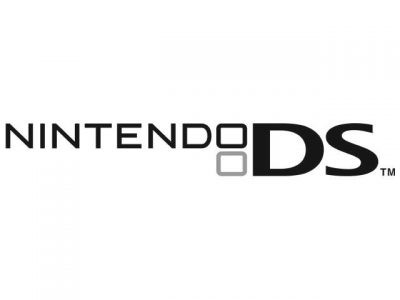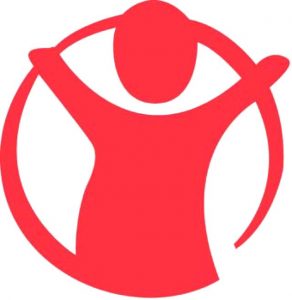Hungarian Transcription Services
100% Precise and Human Generated Hungarian Transcription Services!
GoLocalise offers Hungarian transcription services for audio and video files for business and individual purposes. Our expert team of transcribers will create a text version of your video or audio file, and we can also translate and/or voice over your transcript.
We are your reliable Hungarian transcription company!
What Is Transcription?
No, this isn’t a trick question and you might be surprised how many people get this wrong. In simple terms, transcription is the process of listening to audiovisual content and writing down what is heard.
Seems simple enough, so what exactly is the part that confuses people?
We used GoLocalise to voice several of our films in Vietnamese. The service was friendly and professional. Being able to attend the recording sessions gave me confidence; the sound engineer had taken a lot of time to familiarise himself with our films and scripts, and the voice talents were incredibly competent and good at adapting to any changes in the scripts as we recorded. The whole process was incredibly smooth and I felt in safe hands.
Let's get started!
Understanding The Difference Between Transcription and Translation
Many people confuse transcription with translation.
If you need a text version of your audiovisual content in a language which is different to the original language of your source material then you need translation (which, by the way, we can also help you with).
If you’re simply in need of a written transcript in the same language as your original audiovisual materials, that is transcription and you’re in the right place.
What Do Our Hungarian Audio and Video Transcription Services Include?
A voice-to-text method that captures everything spoken, including interjections, signs of emotion (coughs, sighs, chuckles), false starts, and thought process shifts. It’s useful for reference during editing, but not ideal for finished, polished content.
This captures the speech exactly as it’s spoken, omitting filler words but without correcting grammar or sentence structure. It’s useful when accuracy is needed, but without polishing the final result.
Filler words, false starts, and mispronunciations are eliminated, with grammar corrected. This creates a refined document that reads more like proper text, ideal for publishing or any public-facing material.
Learn more about Transcription Services
Let's get started!
What Are the Benefits of Transcribing Your Hungarian Audio or Video Content with GoLocalise?
There is often confusion between transcription and translation. If you need a version of your audiovisual content in a different language, the you you require translation (which we can also assist with). However, if you simply need a written transcript in the same language as your original content, then transcription is what you need — and you’ve come to the right place.
Take a podcast, for instance. By providing a text version of your audio content, search engines like Google can easily index and include it in their search results. When people search for keywords related to your subject matter, they’re far more likely to come across your material. This not only boosts your visibility but also significantly increases traffic to your site, expanding your reach and enhancing your online presence.
Journalists, bloggers, and other content creators often rely on quotes and citations to back up their arguments. When faced with two equally credible sources, one of which has already been transcribed, the transcribed version is much more likely to be chosen. Having your content available in written form makes it far easier for others to reference and quote, increasing the chances of your material being used in a variety of publications and discussions.
Creating high-quality audiovisual content, whether a podcast or a video, is both time-consuming and expensive. Why restrict it to just one format or platform? With a transcript, you can repurpose your content into a range of new formats, such as blog posts, social media updates, or short teaser clips that can attract new audiences. This process not only drives more traffic to your site but also ensures that your original content continues to serve a variety of purposes, maximising its value and impact.
One of the most important benefits of transcription is the increased accessibility it provides, particularly for people with hearing impairments. Without a written transcript, your audio or video content remains completely inaccessible to the deaf and hard-of-hearing communities. Providing a transcript ensures that everyone, regardless of their hearing ability, can engage with your content, helping to make your message more inclusive and far-reaching.
In the UK alone, there are approximately 550,000 Polish speakers, along with over a million speakers of languages such as Punjabi, Gujarati, Bengali, and Urdu. For many second-language speakers, especially when the content involves complex topics or colloquial expressions, following along with audio in a non-native language can be challenging. By providing a written transcript, you give these audiences a valuable resource to help them understand and engage with your content more effectively, bridging the gap between language barriers.
Creating your audiovisual content, whether that's a podcast or a video of some kind, is often an incredibly time-consuming and expensive process. So why use it for only one purpose? You can use a transcription to repurpose your materials into a blog or social media post, to drive traffic to your website, to use as a teaser to bring people to a full-length podcast, and many more uses too.
Can I Use a Transcription As Subtitles?
Yes, and no. GoLocalise specialises in anything audiovisual so of course if you’re in need of a full subtitling service we can absolutely help with that too, and in fact transcription is an integral part of the process when creating a same-language subtitle file.
The main difference here would be that subtitling also requires very precise technological know-how so that the resultant subtitles follow subtitling conventions and don’t prove to be distracting to the viewer.
A transcription by default won’t necessarily follow these guidelines and is better suited for other purposes, such as the ones listed above.
Tap Into Our High Quality Hungarian Transcription Services Now!
So, whatever your reason for transcribing your audio or video content in Hungarian, we’re happy to help.
Whether it’s to make your Hungarian podcast more accessible to people with hearing impairments, for use as a starting point for a video localisation project, or for any other reason, our experience in these fields has made us the top choice for clients all over the world who want to get more out of their audiovisual content.
Our transcriptionists specialise transcribing Hungarian content, but also other audiovisual content from many other languages, consistently ensuring high-quality results.

Leave your project to the experts at GoLocalise so that you can relax and be assured of getting top-notch results
Every single detail will be analysed, studied and looked after so that you do not need to worry.
Some would say it’s not too classy to blow our own trumpet… but we just like to point out two very important details.
We have achieved ISO 9001 Quality Management certification in recognition of our consistent performance and high standards, and ISO 14001 Environmental Management because we care about our planet!
And if you are still curious and want to know more about us, why not have a look at our studio page.
Learn more about Transcription Services
Let's get started!
Reach your target market
Don’t leave your important communication to chance. Make sure your message is clearly understood by your audience and choose GoLocalise for your next voice over project. Check out our latest case studies.
We have thousands of passionate and professional voice over artists ready to work with you. Meet some of them in our blog stories.
No matter the type of voice you are looking for, we’ll either have it in our books or find it and source it for you. We’ll organise a casting and ensure you get the perfect voice to suit your needs.
You will also benefit from having your own dedicated project manager – a single point of contact – to guide you through your project, answer any questions you may have and make things a whole lot easier.


Meet your dedicated project manager
Your project will be in the safe hands of one of our multilingual project managers. They will guide you through every step and ensure you understand the process.
Our industry has a tendency to use lots of technical jargon but your dedicated project manager will be on-hand to untangle the mess and explain all you need to know to ensure you only pay for what you need.
If you need help in choosing the right voice over talent to deliver your message then just ask your project manager.
From booking our voice over recording studios to ensuring you project is delivered on time in your chosen media, relax and let your experienced project manager take care of everything.
You will receive unparalleled attention to detail and customer focus at competitive prices. You’ll wish everything was as easy as a GoLocalise voice over agency!
Perfect voice over recording studios
Your most discerning customers will thank you for choosing our modern state-of-the-art recording studios. Every detail has been carefully thought through for your comfort, leaving you to simply focus on what matters most – the voice over session.
Your recordings will sound beautiful and crystal clear thanks to our high-end studio sound-proofing and audio equipment, i.e. ProTools HD and Neumann microphones.
Maximise your budget by reducing the need for retakes with the help of our experienced in-house sound engineers who will professionally capture and edit your audio.
And for those recordings in languages which neither you nor your client speak, we’ll bring a qualified pro to your session to add that essential ingredient.
To make you feel right at home, we provide high-speed Wi-Fi Internet and air-con is available. And last but not least, we have the biggest cookie jar you’ve ever seen, that’ll make your custom brew taste even sweeter!

What our happy customers say
Stefanie Smith
Producer at Education First

Patricia Leon-Fedorko
Account Specialist at Advanced Language

Lucas Cole
Sales and Marketing Director at Epipheo
Philippa Strandberg-Long
Deputy Course Leader - Acting, Italia Conti
Josie Gallo
Content Co-ordinator at Medical Aid Films
Marion Hirst
Translation Project Manager at Language Wire


Price Match Promise
Challenge Our Prices, Enjoy Our Quality
A Brief History Of Hungarian
Hungarian is the official language of Hungary and one of the 24 official languages of the European Union. Outside Hungary it is also spoken by communities of Hungarian people in neighbouring countries—especially in Romania, Slovakia, Serbia and Ukraine—and by Hungarian diaspora communities worldwide. Like Finnish and Estonian, it belongs to the Uralic language family, with its closest relatives being Mansi and Khanty. It is one of the few languages of Europe that are not part of the Indo-European family.
The Hungarian name for the language is magyar. The word “Magyar” is also used as an English word to refer to Hungarian people as an ethnic group, or to the language.
Hungarian is a member of the Uralic language family. Linguistic connections between Hungarian and other Uralic languages were noticed in the 1670s, and the family itself (then called Finno-Ugric) was established in 1717, though the classification of Hungarian as a Uralic/Finno-Ugric rather than Turkic language continued to be a matter of impassioned political controversy through the 18th and into the 19th centuries. Hungarian has traditionally been assigned to a Ugric branch within Uralic/Finno-Ugric, along with the Mansi and Khanty languages of western Siberia (Khanty–Mansia region), but it is no longer clear that this is a valid group. When the Samoyed languages were determined to be part of the family, it was thought at first that Finnic and Ugric (Finno-Ugric) were closer to each other than to the Samoyed branch of the family, but this position is currently considered questionable.
The name of Hungary could be a result of regular sound changes of Ungrian/Ugrian, and the fact that the Eastern Slavs referred to Hungarians as Ǫgry/Ǫgrove (sg. Ǫgrinŭ) seemed to confirm that. Current literature favours the hypothesis that it comes from the name of the Turkic tribe Onogur (which means “ten arrows” or “ten tribes”).
There are numerous regular sound correspondences between Hungarian and the other Ugric languages. For example, Hungarian /aː/ corresponds to Khanty /o/ in certain positions, and Hungarian /h/ corresponds to Khanty/x/, while Hungarian final /z/ corresponds to Khanty final /t/. For example, Hungarian ház [haːz] “house” vs. Khanty xot [xot] “house”, and Hungarian száz [saːz] “hundred” vs. Khanty sot [sot] “hundred”. The distance between the Ugric and Finnic languages is greater, but the correspondences are also regular.
Hungarian is the official language of Hungary, and thus an official language of the European Union. Hungarian is also one of the official languages of Vojvodina and an official language of three municipalities in Slovenia: Hodoš, Dobrovnik and Lendava, along with Slovene. Hungarian is officially recognized as a minority or regional language in Austria, Croatia, Romania, Zakarpattia in Ukraine, and Slovakia. In Romania it is a recognized minority language used at local level in communes, towns and municipalities with an ethnic Hungarian population of over 20%.
The first printed Hungarian book was published in Kraków in 1533, by Benedek Komjáti. The work’s title is Az Szent Pál levelei magyar nyelven (In original spelling: Az zenth Paal leueley magyar nyeluen), i.e. The letters of Saint Paul in the Hungarian language. In the 17th century, the language was already very similar to its present-day form, although two of the past tenses were still used. German, Italian and French loans also appeared in the language by these years. Further Turkish words were borrowed during the Ottoman rule of part of Hungary between 1541 and 1699.
In the 18th century a group of writers, most notably Ferenc Kazinczy, began the process of language renewal (Hungarian: nyelvújítás). Some words were shortened (győzedelem > győzelem, ‘triumph’ or ‘victory’); a number of dialectal words spread nationally (e.g. cselleng ‘dawdle’); extinct words were reintroduced (dísz ‘décor’); a wide range of expressions were coined using the various derivative suffixes; and some other, less frequently used methods of expanding the language were utilized. This movement produced more than ten thousand words, most of which are used actively today.
The 19th and 20th centuries saw further standardization of the language, and differences between the mutually comprehensible dialects gradually lessened. In 1920, by signing the Treaty of Trianon, Hungary lost 71% of its territory, and along with these, 33% of the ethnic Hungarian population. Today, the language is official in Hungary, and regionally also in Romania, in Slovakia, in Serbia, in Austria and in Slovenia.
The Complete Solution To Adapt Your Content
Looking to get your entire project under one roof? Look no further, we can help you make life easier for you!

- Neumann Microphones
- On-hand Sound Engineers
- Talented Voice Over Actors
- State-of-the-art Recording Studios

- Tailored to Your Business
- Stringent Quality Control Process
- Laser-Focused Project Managers
- Global Network of 600+ Languages

- Professional Subtitlers
- Open/Closed Captions & Web
- Industry-Standard Software
- Subtitle Burn-in & Graphic Editing

- Improve accessibility
- Reach a wider audience
- Increased SEO and video views
- Maximise your video's engagement











